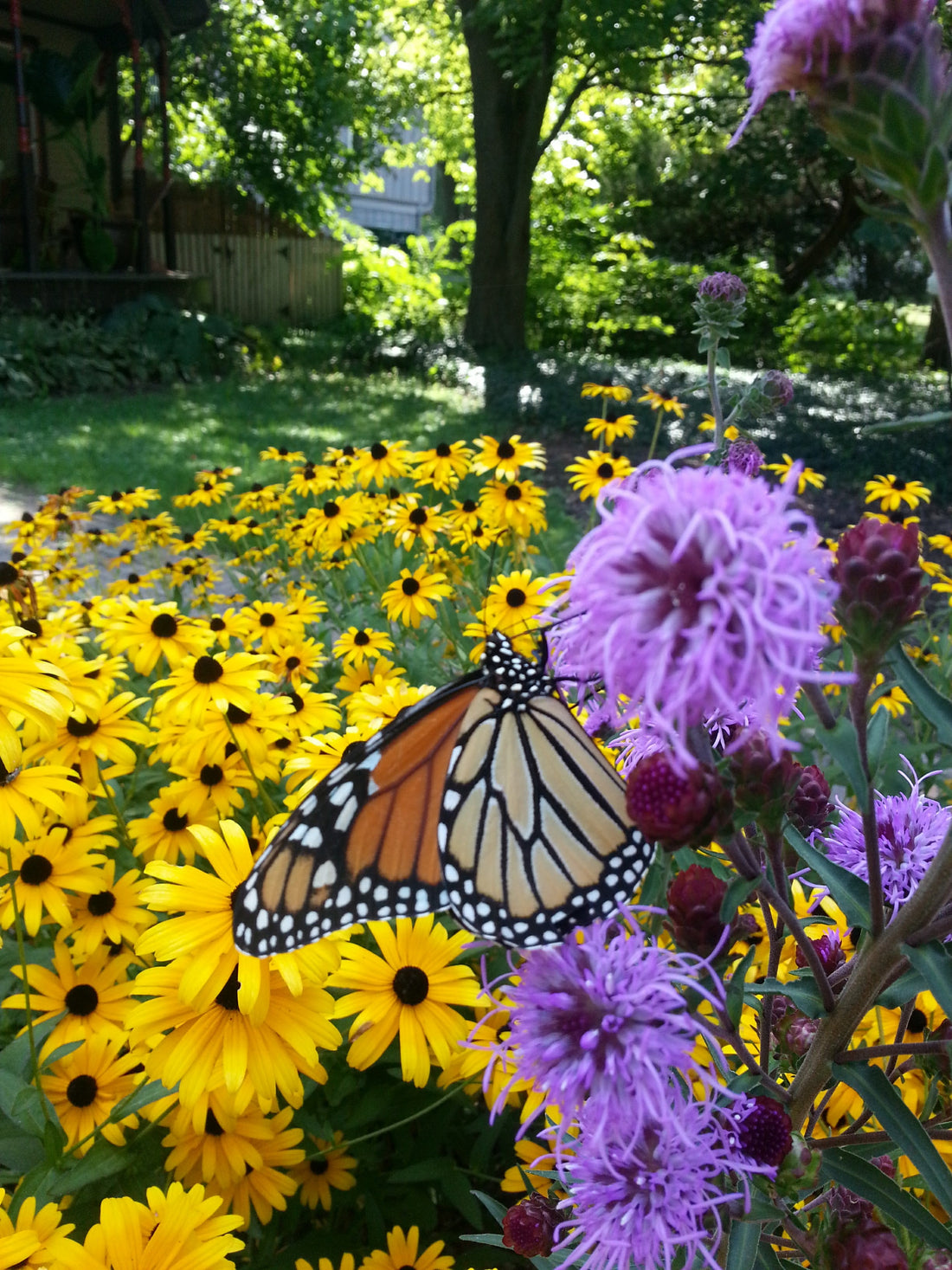Tired of a boring lawn? Craving a vibrant haven for pollinators and a stunning display of wildflowers? Look no further than a native plant garden!
This blog post will guide you through using native plant plugs to establish your own pocket prairie, woodland garden, or rain garden.
Planting for Success:
Timing is Key: Opt for early spring or fall to plant your plugs. This allows for root system development before facing extreme temperatures.
Location, Location, Location: Consider sun exposure and moisture levels when choosing your planting site. Native plants thrive in various conditions, so you can create a pocket prairie in a sunny spot, a partially shaded area, or even a shady location.
Sun or Shade?
Select plants suited to your chosen sunlight conditions. Many native wildflowers flourish in full sun, while others prefer partial shade or dappled light. Research your chosen plants to ensure they'll thrive in your garden's sunlight levels.
- Hydrology Matters: Think about your watering capabilities and natural drainage. Some native plants prefer consistently moist soil, while others are drought tolerant. Match your plant selections to your watering habits and the drainage of your chosen spot.
- Prepping the Stage: Clear away existing vegetation and weeds to minimize competition for resources.
- Planting Pointers: Dig holes slightly larger than the plugs, gently loosen any compacted roots, and position the plugs at ground level. Backfill the holes and firm the soil.
- Watering Wisely: Deep watering after planting is crucial, followed by consistent watering, especially during the first few weeks.
- Weed Warriors: Regularly remove weeds, particularly during the first year, to give your native plants a chance to flourish.
The Power of Plugs:
Grasses for Textural Flair: Little bluestem and switchgrass are excellent bunchgrasses for adding textural interest and winter beauty.
Sedges for Different Needs: Riverbank sedge thrives in moist areas, while Pennsylvania sedge tolerates shade well.
Planting with Purpose: Space your plugs according to their mature size, typically 12-18 inches apart. Ensure the crown (where the roots and stem meet) sits at soil level.
Post-Planting Care: After establishment, most grasses and sedges require minimal watering. Trim back dead foliage in late winter or early spring before new growth emerges.
Mulch and Corn Gluten Meal: A Winning Combination:
Mulch Magic: Apply a 2-3 inch layer of organic mulch around the base of your plants to suppress weeds. Opt for shredded bark, wood chips, or chopped leaves.
Corn Gluten Meal for Weed Prevention: Use corn gluten meal as a pre-emergent weed control solution in early spring or fall. Reapply every 4-6 weeks during the growing season.
Remember:
After plants are established and weeds are easily controlled, avoid applying corn gluten meal directly on native plant seeds as it can hinder germination.
With a little planning and care, your native plant garden will flourish, transforming your yard into a beautiful and ecologically beneficial space. Enjoy the rewards of attracting pollinators, creating a habitat for wildlife, and witnessing the stunning display of native wildflowers throughout the seasons.
Learn more about Pocket Prairies and creating climate resiliency by visiting our blog post: Tangible Actions for Climate Change: How to Plant a Pocket Prairie

